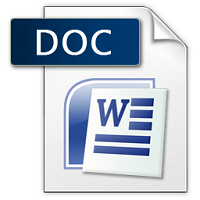₹198.00
Scroll down for Match your questions with Sample
Note- Students need to make Changes before uploading for Avoid similarity issue in turnitin.
Another Option
UNIQUE ASSIGNMENT
0-30% Similarity in turnitin
Price is 700 per assignment
Unique assignment buy via WhatsApp 8755555879
Description
| SESSION | NOV-DEC 2023 |
| PROGRAM | MCA |
| SEMESTER | III |
| course CODE & NAME | DCA8143, Cryptography and Network Security |
| CREDITS | 4 |
| nUMBER OF ASSIGNMENTS & Marks | 02
30 |
Set-Ist
- A. Differentiate between Symmetric and Asymmetric key cryptographic techniques.
Ans:Symmetric key and asymmetric key cryptographic techniques are two fundamental approaches to secure communication and data protection. They differ in how keys are used for encryption and decryption, as well as in their application scenarios.
Here’s a brief differentiation between symmetric and asymmetric key cryptography:
Its Half solved only
Buy Complete from our online store
https://smuassignment.in/online-store/
MUJ Fully solved assignment available for session SEPT 2023.
Lowest price guarantee with quality.
Charges INR 198 only per assignment. For more information you can get via mail or Whats app also
Mail id is aapkieducation@gmail.com
Our website www.smuassignment.in
After mail, we will reply you instant or maximum
1 hour.
Otherwise you can also contact on our
whatsapp no 8791490301.
- Explain the working mechanism of digital signatures. Why digital signatures are important?
Ans: Digital signatures provide a way to verify the authenticity and integrity of digital messages or documents. They are a crucial component of modern cryptographic systems and play a vital role in securing digital communication.
Here’s an overview of how digital signatures work and why they are important:
Working Mechanism of
- A. What are the challenges in computer security?
Ans:Computer security faces numerous challenges, reflecting the constantly evolving nature of technology and the sophisticated tactics employed by malicious actors.
Some of the key challenges in computer security include:
Cyber Threats and
- Suppose we receive the message “ADDSH BGSAR OLGNN VCAII SFWDI AOTRN LSAUF RLLWL OENWE HIC” that was enciphered using a keyword columnar transposition with the keyword “GILLIGAN”. Decipher this message.
Ans:
To decipher a message that was enciphered using a keyword columnar transposition, we need to follow these steps:
Determine the Column Order: Write the keyword in alphabetical order, and note the original order of the letters. The original order is the o
Set-IIND
- Elaborate the symmetric key distribution. What are the benefits of benefits of IPsec?
Ans: Symmetric Key Distribution: Symmetric key distribution refers to the process of securely sharing a secret key between communicating parties in a way that prevents unauthorized interception and tampering.
Symmetric key cryptography uses the same key for both encryption and decryption, making the secure distribution of the
- Explain the architecture and services of the wireless application protocol.
Ans: Wireless Application Protocol (WAP) is a technical standard that enables access to information and services on the internet from mobile devices. It was designed to provide a standardized way for mobile devices to interact with web content, making it accessible on devices with limited capabilities, such as mobile phones. WAP operates on the application layer of the OSI
- What are the key categories of malicious software? What are the different types of viruses?
Ans: Malicious software, often referred to as malware, encompasses a wide range of software designed to harm, exploit, or compromise computer systems and networks. The key categories of malicious software include viruses, worms, Trojans, ransomware, spyware, adware, and


